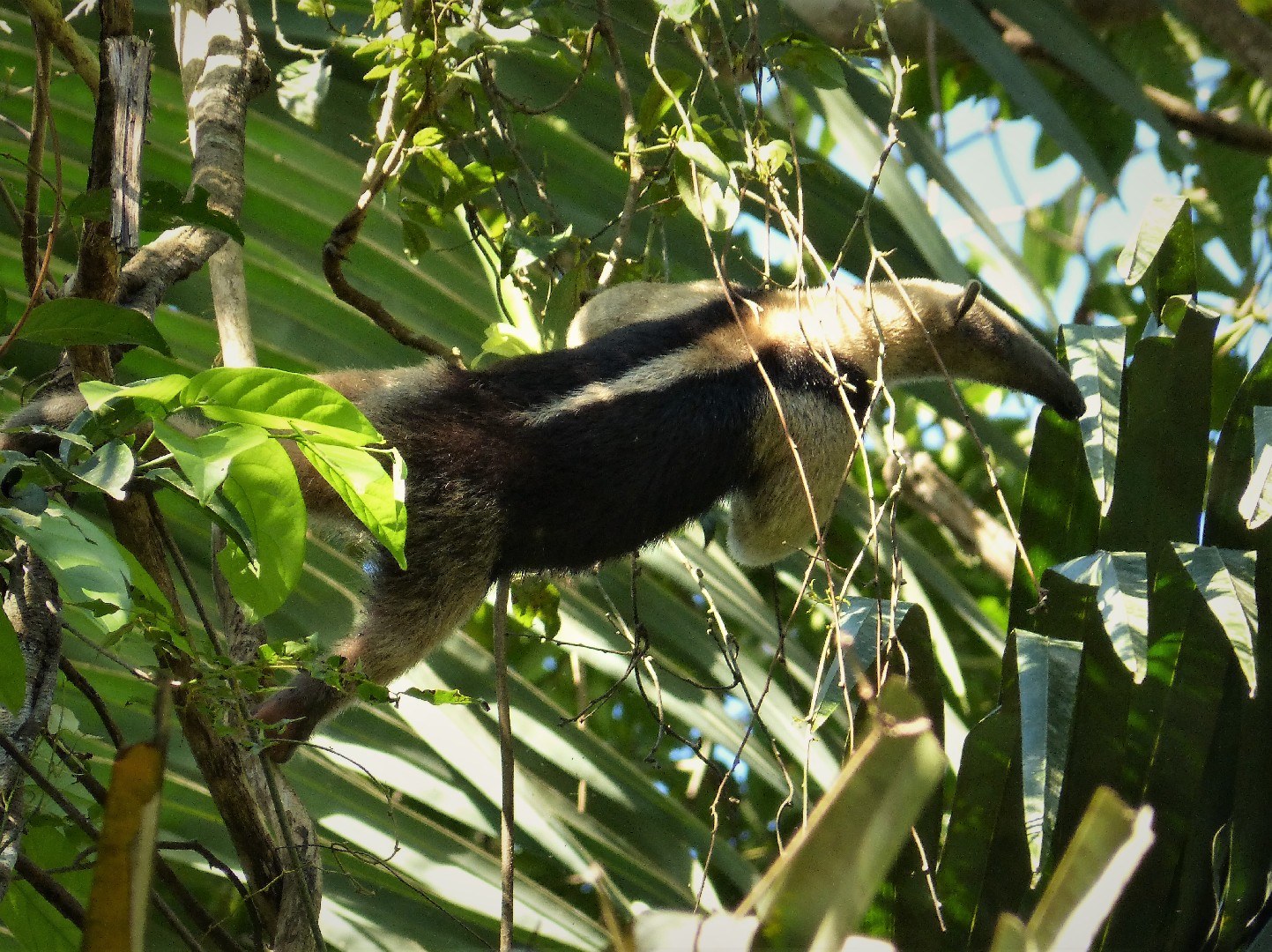Northern tamandua
A species of Anteater Scientific name : Tamandua mexicana Genus : Anteater
Northern tamandua, A species of Anteater
Scientific name: Tamandua mexicana
Genus: Anteater
Content
Description General Info
 Photo By gailhampshire , used under CC-BY-2.0 /Cropped and compressed from original
Photo By gailhampshire , used under CC-BY-2.0 /Cropped and compressed from original Description
The northern tamandua is a medium-sized anteater with a prehensile tail, small eyes and ears, and a long snout. The fur is pale yellow over most of the body, with a distinctive patch of black fur over the flanks, back, and shoulders, that somewhat resembles a vest in shape. The presence of this colouration pattern makes it possible to distinguish this species from its southern relative, which has a more uniform colour. The tail has fur on its upper surface for about a third of its length, but is otherwise hairless. The hind feet have five toes, while the fore feet have only four. Males and females are similar in size and colour, and range from 102 to 130 centimetres (40 to 51 in) in total length, including the 40 to 68 centimetres (16 to 27 in) tail. Adults weigh between 3.2 to 5.4 kilograms (7.1 to 11.9 lb). Like other anteaters, the northern tamandua is highly adapted to its unusual diet. The tongue is long, extensible, and covered in sticky saliva able to pick up ants and termites. It has unusually well developed muscles, attached to a large hyoid bone and rooted to the top of the sternum. The entire oral cavity is modified to accommodate this tongue, and is so elongated that the back of the soft palate is level with the fifth cervical vertebra near the base of the neck, rather than at the top of the pharynx as in most other mammals. The jaw muscles and mandible are reduced, and the latter is particularly fragile. Like other anteaters, the northern tamandua has no teeth. In addition to its diet, and unlike the giant anteater, the northern tamandua is also adapted to an arboreal lifestyle. The muscles of the toes and the presence of a tough pad on the palms makes the forefeet prehensile, enabling them to grip onto projections as it climbs. The middle toe of the forefeet also bears an unusually large claw, and the toe has enough muscle and leverage to allow it to rip open wood to get at the ants within. 
General Info
Lifespan
9-14 years
Diet
Northern tamandua primarily feeds on ants and termites. Using its long, narrow, sticky tongue, it can gather up to 9,000 insects daily. Occasionally, northern tamandua also consume ripe fruits, aiding in seed dispersal.
Appearance
The northern tamandua is a medium-sized mammal with a slender, elongated body cover by thick, bristle-like fur. Boasting a light tan to golden yellow coat, it carries long, curved claws on its forelimbs. The northern tamandua further distinguishes itself with a long, prehensile tail, and unique, elongated snout. There's no striking sexual dimorphism or age-relevant changes in appearance, thereby rendering all individuals quite similar in overall aesthetics.
Behavior
Northern tamandua is primarily a solitary, nocturnal species with prehensile tails designed for climbing and foraging. It feeds mainly on ants and termites, using its long, sticky tongue. Minimal territorial behavior is observed, but it tends to mark its area with scent from anal glands. Northern tamandua lacks teeth and uses strong, muscular stomachs to grind food.
Scientific Classification
Phylum
Chordates Class
Mammals Order
Anteaters and sloths Family
Anteaters Genus
Anteater Species
Northern tamandua